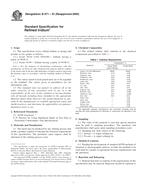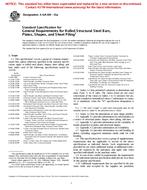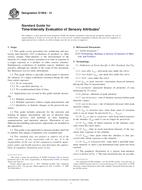1.1 This test method covers the use of dynamic-mechanical-oscillation instrumentation for gathering and reporting the thermal advancement of cure behavior of thermosetting resin. It may be used for determining the cure properties of unsupported resins and resins supported on substrates and subjected to various oscillatory deformations. These deformations may be in shear or the dynamic compression of supported resins using a dynamic mechanical instrument.
1.2 This test method is intended to provide means for determining the cure behavior of supported and unsupported thermosetting resins over a range of temperatures by free vibration and resonant and nonresonant forced-vibration techniques, in accordance with Practice D 4065. Plots of modulus, cure behavior, tan delta, and damping index as a function of time/temperature are indicative of the thermal advancement or cure characteristics of a resin.
1.3 This test method is valid for a wide range of frequencies, typically from 0.01 to 100 Hz. However, it is strongly recommended that low-frequency test conditions, generally below 1.5 Hz, will generate more definitive cure-behavior information.
1.4 This test method is intended for resin/substrate composites that have an uncured effective elastic modulus in shear greater than 0.5 MPa.
1.5 Apparent discrepancies may arise in results obtained under differing experimental conditions. These apparent differences from results observed in another study can usually be reconciled, without changing the observed data, by reporting in full (as described in this test method) the conditions under which the data were obtained.
1.6 Due to possible instrumentation compliance, especially in the compressive mode, the data generated may indicate relative and not necessarily absolute property values.
1.7 Test data obtained by this test method are relevant and appropriate for use in engineering design.
1.8 The values stated in SI units are to be regarded as the standard.
1.9 This standard does not purport to address all of the safety concerns, if any, associated with its use. It is the responsibility of the user of this standard to establish appropriate safety and health practices and determine the applicability of regulatory limitations prior to use. Specific precautionary statements are given in Note 5.
Note 2 – There is no similar or equivalent ISO standard.
Product Details
- Published:
- 07/10/2003
- Number of Pages:
- 5
- File Size:
- 1 file , 65 KB
- Redline File Size:
- 2 files , 150 KB


